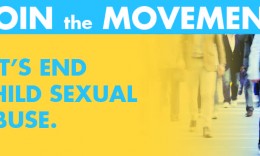Gaining Leadership Support for Improving Child Safety – Part #1

When sharing information on improving child safety, a question commonly asked is, “How do I get leadership in my organization to take child safety seriously and offer support?” Although it’s a good question, it’s unfortunate in today’s world it even has to be asked. All anyone has to do is take a brief look at the local news or spend any time at all on social media where hashtag campaigns such as #MeToo share stories of unimaginable abuse and suffering. To deny these events occur and question the importance of putting effort behind improving child safety puts children at risk.
If you find yourself in the position of having to search for support to make your kids area a safe place for all, we can help! Remember, support for your child safety initiative is less about what you’re proposing and more about how you present it. In the end, don’t assume that your idea will be a slam dunk, you’ll need to spend some time preparing to be able to convince those making the decision.
Listed below are steps you can take to increase awareness, make child safety a top priority, and receive support for your initiative.
Define the Goal – Why should leadership care?
Yes, the first step is always the hardest. Defining the “why” of your improving child safety efforts will set the foundation for everything you do. Take the time needed in this step as it will drive effort, actions, and outcomes. Have it clear in your mind why you’re going down this road. Clarity will give you strength to overcome the objections you’ll encounter. Guaranteed there will be hurdles to overcome.
Keep in mind, child abuse and mistreatment of children brings indescribable pain to victims. However, you can play a vital role in working to protect the children in your care and help adults who have experienced childhood abuse take the first step to healing. In clearly defining the goal of your efforts, you’ll create a domino effect and gain benefits in other areas not originally considered. There is great value in what you’re doing – stay the course.
Lead with Data – What the Experts Say?
Child abuse and prevention are sensitive topics which can make for difficult discussions with most people. Being familiar with current facts provides a platform for conversation and helps to remove the emotion increasing the likelihood of support going forward.
When we’re talking about abuse prevention, it’s important to be over prepared. Seek out data that helps you define the need and works to paint a picture of the current landscape. Using data that speaks directly to the action plan will help garner the support you need and gives leadership talking points for defending the new course of action. Listed below are some examples of current data points to consider.
- 1 in 3 girls and 1 in 4 boys will be sexually assaulted before the age of 18
- Over 80% of child victims know their abusers
- Greater than 90% of convicted offenders consider themselves religious or highly religious
- There are over 747,000 registered sex offenders in the US alone
- There are more than 100,000 sexual offenders who fail to report every year
There are also several good websites such as stopitnow.org, childrenssafetynetwork.org, and safelyeverafter.com that provide good information on current child protection trends. These sites can help you paint a picture of the overall issue.
Check out Part #2. In it, we will look at the importance of finding a champion(s) to help support your efforts, how to find them, and what to do to leverage their knowledge to deliver a solid leadership presentation.
Click here to learn more about the benefits of using KidCheck secure children’s check-in or join our growing social community on Twitter, Facebook, Google+ and Pinterest for more child safety tips/tricks and best practices.


